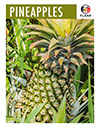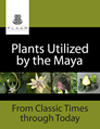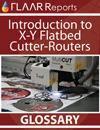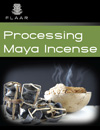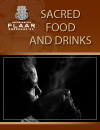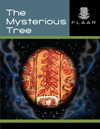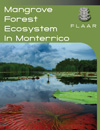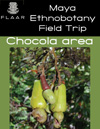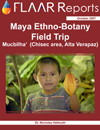Images || VR Objects
|
|
Maya ballplayer figurine, fired clay, Late Classic, A.D. 600-700, about 3 inches tall. Photographed with the permission of the Museo Popol Vuh, Universidad Francisco Marroquin, Guatemala City. Photographed with a KAIDAN Magellan 1000 Object Rig Find out more about KAIDAN's QuickTime VR (QTVR) Products on their website. The blue color of this figurine is a rare pigment known as " Mayan Blue." Use any search engine to locate articles on the fascinating chemistry of this paint that was used a thousand years ago. This figurine is hollow, since solid clay would fracture in the process of heating in the kiln and subsequent cooling. At the back of the figure you can see holes; at the bottom is a mouthpiece to blow on. Most of these figures are whistles or ocarinas Figures of this class are best known from the sacred burial island of Jaina, Campeche, Mexico. Almost every museum in the world, and many art books on Maya archaeology, picture Jaina style figurines. This particular figure, however, is from Guatemala. |
|
This individual wears a special outfit used in the favorite sport of the Classic Maya, the sacred rubber ballgame. Our Book Service has tons of books on the native games of pre-Hispanic cultures. Also, our institute offers colorful slide shows on this exciting sport.
|
This game was played using rubber from the rubber trees, which is a local species in the tropical rain forest. Rubber was also used in religious rituals, to make dolls, and to burn (sort of like incense). Hopefully native Maya rubber smelled somewhat better than old tires today. Of course their rubber was natural, not chemical, and not vulcanized. Rubber was also made into figures, "dolls" that were burnt as offerings. Although pom, from the native Copal tree is the best known indigenous Maya incense, rubber was also used as an incense in pre-Columbian times. |
The Pre-Columbian Ballgame of the Maya and Aztecs
Many different ballgames were played by the peoples of prehispanic Mesoamerica. The game played still today uses a relatively small ball. The Maya had one game with a small ball but their best known ballgame was with a very large ball. When you go to Chichen Itza, or read most popular books, you get a mish-mash of concepts that were not fully how the game was played. For example, most of the Classic Maya never used a yoke; the yoke was more popular in games associated with Veracruz. Yes, many Maya did use yokes (they are pictured on ballgame sculptures including at Copan, Honduras), but most Maya ballplayers wore a wooden ribbing higher on their chest. FLAAR has about a dozen publications on the prehispanic ballgames that explains all this, but its tough to compete with the explanations provided to tourists at Chichen Itza.
If you arrived here from an external link use these links to exit this page:
Media Page .. HOME .. Museo Popol Vuh
This page will take almost 5 minutes on a 28.8 modem. If you enjoy Mayan archaeology it will be worth the wait. If you are unable to open another browser window and will be staring at this page for the next five minutes you might want something to read. Or maybe you are wondering what is a QuickTime VR object and why should I wait for this huge file to download.? QuickTime VR is part of Apple Computers Media layer technology. This object was created from 36 photos (35mm) spaced 10 degrees apart. By clicking and holding down the mouse on the object you can rotate it through 360 degrees of horizontal motion. This allows anyone in the world to examine this rare and precious artifact simply by downloading this page. If you have put off upgrading your browser technology, or the QuickTime plug-in, this would be a good reason to do so. There are thousands of QuickTime files on the world wide web. If you cannot experience this object we have provided a link to a GIF animation(296.7K) of the object in motion. Most browsers can display GIF anims. You will not however be able to control or interact with the object in GIF format, only in QTVR. The entire animation will take 210 seconds to download with a 28.8 modem.
A larger version of this object is available. It is rather large (1.6M )









